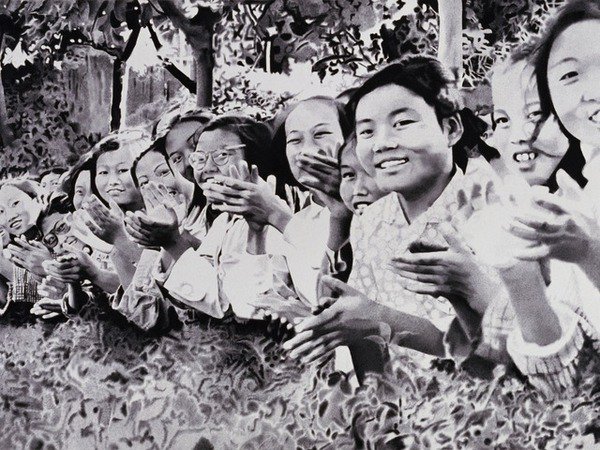East of Eden - Photorealism: Versions of Reality
dal 13/9/2011 al 14/1/2012
Segnalato da
Robert Bechtle
William Beckman
France Berko Bercic
Bernath(y) Sandor
Milan Bockay
Corneliu Brudascu
John Clem Clarke
Chuck Close
Robert Cottingham
Csernus Tibor
Milutin Dragojlovic
Don Eddy
Richard Estes
Halina Eysymont
Jadranka Fatur
Feher Lászlo
Julian Filo
Gerard Gasiorowski
Franz Gertsch
Ralph Goings
Ion Grigorescu
Tadeusz Grzegorczyk
Jean Olivier Hucleux
Kelemen Karoly
Konrad Klapheck
Kocsis Imre
Lukasz Korolkiewicz
Ewa Kuryluk
Lakner Laszlo
Matei Lazarescu
Richard McLean
Mehes Laszlo
Mehes Lorant
Franc Mesaric
Jacques Monory
Malcolm Morley
Lowell Nesbitt
Nyari Istvan
Theodor Pistek
Sigmar Polke
Stephen Posen
Gerhard Richter
Veronika Ronaiova
James Rosenquist
Mimmo Rotella
Andrzej Sadowski
John Salt
Ben Schonzeit
Paul Staiger
Andrzej Strumillo
Andrzej Szumigaj
Andrzej Tryzno
Gerd Winner
13/9/2011
East of Eden - Photorealism: Versions of Reality
Ludwig Museum, Budapest
Photorealism in painting was just as vivid a trend in Eastern Europe in the 60s and 70s as in the United States or Western Europe, even though realistic depiction had completely different traditions to draw from and political demands to meet, while its everydays were of an entirely different nature. The exhibition is an attempt to display these parallel phenomena, to simultaneously render snapshots of the consumer society and the economy of scarcity.

Photorealism in painting was just as vivid a trend in Eastern Europe in the 60s and 70s as in the United States or Western Europe, even though realistic depiction had completely different traditions to draw from and political demands to meet, while its everydays were of an entirely different nature. The exhibition is an attempt to display these parallel phenomena side by side, to simultaneously render snapshots of the consumer society and the economy of scarcity.
The Ludwig Museum - Museum of Contemporary Art is proud to present a broad international collaborative exhibition of Eastern-Central European realist photographical works, presented in parallel with American and Western European pieces.
Photorealism came into its own at the end of the 1960s, arising from the challenge posed by photographic depiction to realist painting, and is mostly associated with well-known Western European artists and their works. The Budapest Ludwig Museum exhibition expands the scope of earlier shows in Vienna (MUMOK, 22 October 2010 - 13 February 2011) and Aachen (13 March - 19 June 2011), both of which included materials from the Ludwig`s collection. Our exhibition offers new approaches to similar Eastern-Central European tendencies by virtue of a complex interpretation of Cold War realism.
Artworks were selected not on the basis of normative, depictive quality. The declared aim of photorealism, photo-illusion (the especially popular fields of street reflections, or the labyrinthine lines of the face) was frequently subsumed by another dimension, namely everyday life during the Cold War and the realistic depiction of economies of shortage. In many instances, choice of subject and critical perspectives played a more important role in our selection than technical precision deployed to examine the gaze and representation.
True-to-life photographic representation and analytical depiction also found parallels and followers on the Eastern side of the Iron Curtain, although not in the same measures or with the same convictions as in the West. The different political and cultural contexts, the long-standing historical tradition of realism and the lack of an art market or consumer culture meant that East European photo-based realism faced fundamentally different perspectives.
The fine arts aspect of photography is a rich and much-discussed theme in Eastern Central Europe, yet within this photorealism has, to date, represented a relatively marginal chapter. The excessively literal rewriting of photography, over-concentration on model modes of depiction and technical precision have suppressed personality and danger: these are well-known arguments that have neglected the politics concealed by choice of source image and theme. Unlike the entirely other world of taut magazine covers, perfectly rendered advertising images and workshop settings, well-meaning and moderately successful family or press photographs shift the emphasis from the challenge to depict, to that of reality.
The exhibition has been realised in collaboration with
Museum Moderner Kunst Stiftung Ludwig Wien
Ludwig Forum für Internationale Kunst, Aachen
The exhibition includes works from internationally-recognised names as well as forgotten artists, thus allowing us to reconsider the recent past through the lenses of an artistic trend in its many forms.
Artists in the show include: Robert Bechtle, William Beckman, France Berko Berčič, Bernáth(y) Sándor, Milan Bočkay, Corneliu Brudascu, John Clem Clarke, Chuck Close, Robert Cottingham, Csernus Tibor, Milutin Dragojlović, Don Eddy, Richard Estes, Halina Eysymont, Jadranka Fatur, Fehér László, Julián Filo, Gérard Gasiorowski, Franz Gertsch, Ralph Goings, Ion Grigorescu, Tadeusz Grzegorczyk, Jean Olivier Hucleux, Kelemen Károly, Konrad Klapheck, Kocsis Imre, Łukasz Korolkiewicz, Ewa Kuryluk, Lakner László, Matei Lazarescu, Richard McLean, Méhes László, Méhes Lóránt, Franc Mesarič, Jacques Monory, Malcolm Morley, Lowell Nesbitt, Nyári István, Theodor Pištěk, Sigmar Polke, Stephen Posen, Gerhard Richter, Veronika Rónaiová, James Rosenquist, Mimmo Rotella, Andrzej Sadowski, John Salt, Ben Schonzeit, Paul Staiger, Andrzej Strumiłło, Andrzej Szumigaj, Andrzej Tryzno, Gerd Winner
Head of Communication Department
Zsuzsanna Fehér Tel.: 06 1 5553466 zsuzsanna.feher@ludwigmuseum.hu
Communication Department, PR and Events
Patricia Piringer Tel: 06 1 5553468 patricia.piringer@ludwigmuseum.hu
image: Gérard Gasiorowski: The Approach ..., 1970
Opening September 13, 2011. 20
Ludwig Museum – Museum of Contemporary Art
Palais of Arts, 1095 Budapest, Komor Marcell u. 1.
Open from Tuesday to Sunday from 10 a.m. to 6 p.m.
General admission: HUF 2 200
Group discount ticket for groups of more than 10 people: HUF 2 000 per person
Valid for all the exhibitions



